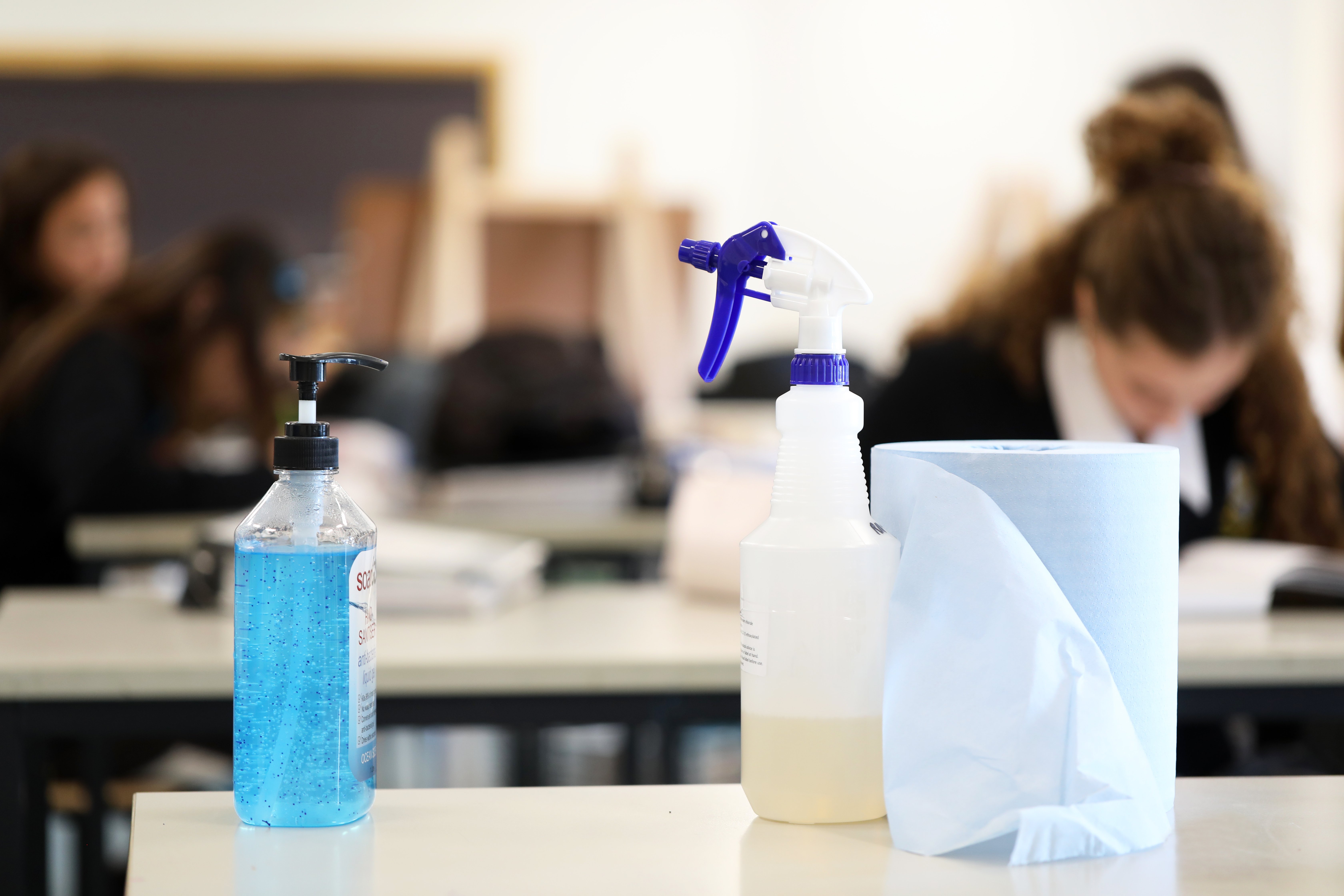During the last week, several independent schools in Sydney have had to shut their doors and send students and staff home when a student tested positive to COVID-19. This occurred within the first couple of days of welcoming students back after weeks of remote learning due the COVID-19 pandemic. On returning to school, the risk of a student or staff member being tested positive for COVID-19 is a foreseeable workplace hazard that the school must address or be in breach of workplace health and safety legislation (as well as having sick staff and students).
The Health and Safety Law Requirement to Identify Hazards and Reduce Harm
All workplaces have a duty under health and safety laws to maintain a safe working environment and to prevent harm to workers and any other persons that may be impacted by the school’s operations. The legislation in most states/territories goes further and requires schools to adopt a systematic approach by:
- identifying the foreseeable hazards
- assessing the risk of each hazard
- identifying all of the reasonably practicable measures that need to be put in place to eliminate or minimise the risk of COVID-19 infection transmission across their areas of operations
- implementing those measures
- reviewing the effectiveness of those measures and taking any necessary remedial action.
At the most obvious level, the hazard is the transmission of COVID-19 in the school, and the enterprise-level risk could be described as:
Failure to take all steps that are reasonably practicable to reduce COVID-19 infection transmission in the school community.
How To Assess the Risk and Implement the Controls: Step by Step Guide
For each area of school operations, we suggest the following process in line with health and safety legislation in all states and territories:
1. Identifying Foreseeable Hazards Associated with COVID-19 Infection Transmission
This first step requires every aspect of school operations to be ‘put under the microscope’ from a hazard or risk mitigation perspective, including taking a look at all of the activities, specific locations and operations that are, or are likely to be, conducted in the school, and where the possible transmission points are likely to be.
A useful starting point for all schools is the Australian Health Protection Principal Committee (AHPPC) statement on risk management for re-opening boarding schools and school-based residential colleges (AHPPC Statement). We have combined their list with further suggested areas and issues that might present a COVID-19 transmission hazard for most schools:
- hygiene facilities (toilets, hand basins)
- drinking water sources
- classrooms
- class times
- each different type of class activity: basic sit-down classes, drama, sport, music, food technology, etc
- change rooms
- locker areas
- library
- sporting areas
- entry and exit to the school – drop off /collection
- bus waiting areas
- catering/canteen processes and premises
- vulnerable students
- vulnerable teachers or other staff
- indoor/outdoor recreation areas
- visitors
- school office/reception
- staff common rooms and kitchen
- first aid room/clinic
- assembly areas
- off campus visits
- laundry areas (if applicable) and other ancillary areas.
Boarding schools will have additional areas of operations to consider.
2. Risk Assessment
Once identified, the next step is to assess the risks associated with that activity or area of operations, again, from the COVID-19 infection transmission perspective. The risk assessment involves determining the likelihood of the harm occurring and the seriousness of the consequences. This assessment for each hazard will determine how much effort and resourcing is warranted to ensure that all “reasonably practicable” control measures are in place for that hazard.
The likelihood will depend on the situation, the amount of contact, the frequency of contact, the length of time of the contact and all the other factors that we are aware of related to the transmission of the infection in particular situations and contexts. Issues to consider in determining likelihood include:
- How often will a person be exposed to the risk? For example, a staff member who works in school administration may have almost no direct contact with any students whereas another school administration staff member may have frequent contact with students as part of their role.
- The length of time of the exposure.
- Are there any current controls in place and are these effective? Examples might include physical barriers such as bank teller style windows that already exist for payment of money in the school finance department and training that has already been given to students and staff on infection control procedures such as washing of hands and not sharing utensils and equipment etc.
- Does the risk of harm decrease or increase based on the particular characteristics of the person? Younger students tend to have more physical contact with their teachers such as needing more help with work tasks, needing their shoelaces tied up, toileting ‘accidents’ etc. Depending on the age of the students, they may be more or less likely to adhere to physical distancing requirements or abide by any new procedures or rules related to infection control. It should be noted that, while older staff members or those with compromised immune systems may be more at risk in terms of consequences if they have the infection, they are not necessarily more likely to have the infection transmitted to them just because of their age.
The consequence of the spread of COVID-19 infection transmission within the school community would be considered to fit the “major” category, that is:
A life-threatening illness requiring lengthy hospitalisation/rehabilitation with more than a month off work/school.
The severity of the consequences does not change from one school activity to the next. We know that not every case of infection is in the “major consequence” category but it is not sensible to try and predict the consequence of infection in relation to a particular individual or group of individuals. It is better to take a more cautious approach and assume that the infection of an individual will at least have a “major” consequence.
3. Identifying Control Measures
Once each risk has been assessed, control measures should be put in place using the “hierarchy of controls” method. This is a requirement under the harmonised work health and safety system and recommended in the AHPPC Statement with reference to risk mitigation by schools. The “hierarchy of control” approach requires the school to consider implementing the control measures that provide the highest level of protection and most reliable controls, and consider the next lower level of controls where the previous one is not “reasonably practicable”. Some hazards may require more than one level of control measure to provide an acceptable level of risk of harm.
- At the top of the hierarchy is elimination of the risk. This would include closing the school for a period of time or closing areas that may be too difficult to keep clean or for individuals to maintain the appropriate distance from one another.
- The next level of control is substitution, isolation or engineering controls. This might include physical barriers to prevent people crowding into a canteen or other close area or providing another means of providing school lunches or collecting notes from students that does not require person to person contact.
- The next level is administrative controls. These could include enforcing social distancing with marked areas, staggering the times for recess and lunch breaks, cancelling assemblies and sporting events, and educating the school community on the measures that are being implemented to ensure compliance. Appropriate cleaning of school premises would be included in this.
- The lowest level in the hierarchy of controls is PPE or personal protective equipment. This includes face masks and gloves, protective eyewear etc. as well as providing hand sanitisers and soap.
4. Consultation with Workers
As part of the determination of control measures, health and safety laws require consultation with “workers” likely to be affected by the controls. This means that schools must consult with staff and contractors, but should also consult more widely with the school community including students, parents, and others that may be affected by the school operations in relation to the control measures. For example, if changes are to be made to the way that the school administration functions to reduce the frequency of student-staff contact, staff that are affected by these changes must be consulted.
5. Implementation
Once the controls have been identified for each area of school operations, the next step is to implement the controls.
6. Reviewing Control Effectiveness
Once implemented, the next crucial step is to review the effectiveness of the controls. This is an essential step. It is important to ask:
- Are the controls working as intended?
- What new information is available as to the effectiveness of controls?
- What changes should we make to the controls so that they are more effective?
Conclusion
Complying with the methodology required by workplace health and safety legislation may seem like time wasted that could be better spent cleaning, however, its value is in being systematic. It is also the approach recommended by the AHPPC. Rather than just ‘jumping’ to control measures, it provides a framework designed to ensure that a school turns its mind to as many foreseeable hazards as is reasonable, then determines the priority of control measures in an informed and sustainable way. Nevertheless, whichever method is used, cleaning and social distancing will probably still be key to keeping staff and students safe.
Authors
Jonathon Oliver
 Jonathan is a Principal Consultant working with CompliSpace education clients. He has more than 10 years experience in the school sector as a teacher, compliance and legal adviser and more recently as a Business Manager. Jonathan has been a solicitor for nearly 30 years and worked in both private practice and community legal centres.
Jonathan is a Principal Consultant working with CompliSpace education clients. He has more than 10 years experience in the school sector as a teacher, compliance and legal adviser and more recently as a Business Manager. Jonathan has been a solicitor for nearly 30 years and worked in both private practice and community legal centres.
Svetlana Pozydajew
 Svetlana is a Senior Consultant at CompliSpace. She has over 20 years of experience in strategic and operational human resource management, occupational health and safety, and design and implementation of policies and change management programs. She has held national people management responsibility positions in the public and private sectors. Svetlana holds a LLB, Masters in Management (MBA), Master of Arts in Journalism, and a Certificate in Governance for not-for-profits.
Svetlana is a Senior Consultant at CompliSpace. She has over 20 years of experience in strategic and operational human resource management, occupational health and safety, and design and implementation of policies and change management programs. She has held national people management responsibility positions in the public and private sectors. Svetlana holds a LLB, Masters in Management (MBA), Master of Arts in Journalism, and a Certificate in Governance for not-for-profits.


 Jonathan is a Principal Consultant working with CompliSpace education clients. He has more than 10 years experience in the school sector as a teacher, compliance and legal adviser and more recently as a Business Manager. Jonathan has been a solicitor for nearly 30 years and worked in both private practice and community legal centres.
Jonathan is a Principal Consultant working with CompliSpace education clients. He has more than 10 years experience in the school sector as a teacher, compliance and legal adviser and more recently as a Business Manager. Jonathan has been a solicitor for nearly 30 years and worked in both private practice and community legal centres. Svetlana is a Senior Consultant at CompliSpace. She has over 20 years of experience in strategic and operational human resource management, occupational health and safety, and design and implementation of policies and change management programs. She has held national people management responsibility positions in the public and private sectors. Svetlana holds a LLB, Masters in Management (MBA), Master of Arts in Journalism, and a Certificate in Governance for not-for-profits.
Svetlana is a Senior Consultant at CompliSpace. She has over 20 years of experience in strategic and operational human resource management, occupational health and safety, and design and implementation of policies and change management programs. She has held national people management responsibility positions in the public and private sectors. Svetlana holds a LLB, Masters in Management (MBA), Master of Arts in Journalism, and a Certificate in Governance for not-for-profits..png)
